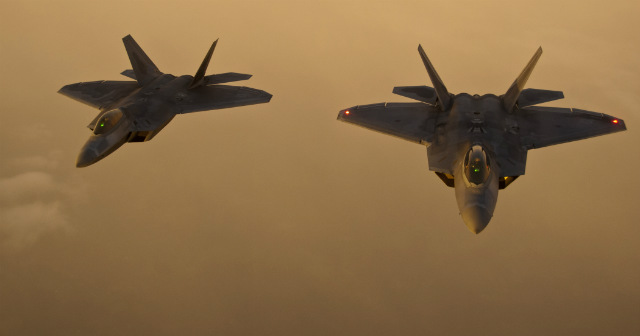The US Air Force has removed the majority of operating restrictions previously imposed on its Lockheed Martin F-22 fighter pilots, but is continuing to limit the maximum altitude to which the type can be flown.
Around 21,000 sorties have been completed without incident since the USAF lifted a safety-related grounding order imposed for three months late last year, says Maj Gen Larry Wells, commander of its Ninth Air Force organisation. The suspension was introduced following an investigation ordered after several pilots had reported encountering hypoxia-like symptoms while flying the stealthy type. This traced the problem to issues with the Raptor's onboard oxygen generation system's oxygen schedule and Combat Edge upper pressure garment.
Several restrictions initially imposed after a return-to-flight decision was approved, including the need to remain within 30min flying time of a landing site, have now been removed, but pilots still must stay below an imposed limit of 35,000ft (10,700m), Wells says. This can be increased to 40,000ft if a high-altitude flight suit is being worn. A new pulse oximeter system to monitor the pilot's health and warn of any hypoxia-like event is now being used inside the helmet, in place of an earlier finger-mounted design.
 |
|---|
US Air Force |
The F-22 will be cleared to its usual service ceiling of above 60,000ft only after a modified valve has been supplied for use as part of the pilot's life support system equipment. Wells says work continues on this, after a redesigned valve encountered "flutter" during testing.
However, speaking at IQPC's International Fighter conference in London on 8 November, Wells said: "If we had to go to combat we would lift those restrictions."
Meanwhile, Wells invited more of the USAF's international partners to participate in major exercises involving the F-22 community. "Fourth- and fifth-generation [fighter] integration: that's where your nations need to be more engaged with us," he says, also pointing to the training challenge that will face several allies in fielding the stealthy Lockheed F-35 Joint Strike Fighter.
Recent training activities have involved a change of tactics, he says, with the Raptor acting as a "quarterback" during the direction of friendly forces against aggressor threats, rather than flying solely as an air superiority asset. The F-22's lack of a datalink compatible with older fighters and reliance on voice communications with other aircraft is a "limiting factor", Wells concedes, but adds that the type will begin to gain an improved, receive-only Link 16 capability as part of a new software standard to be introduced under an Increment 3 upgrade effort.
Lockheed earlier this year delivered the USAF's last of 187 Raptors, two of which have crashed, with the Ninth Air Force currently accounting for two operational squadrons.
Source: Flight International
















